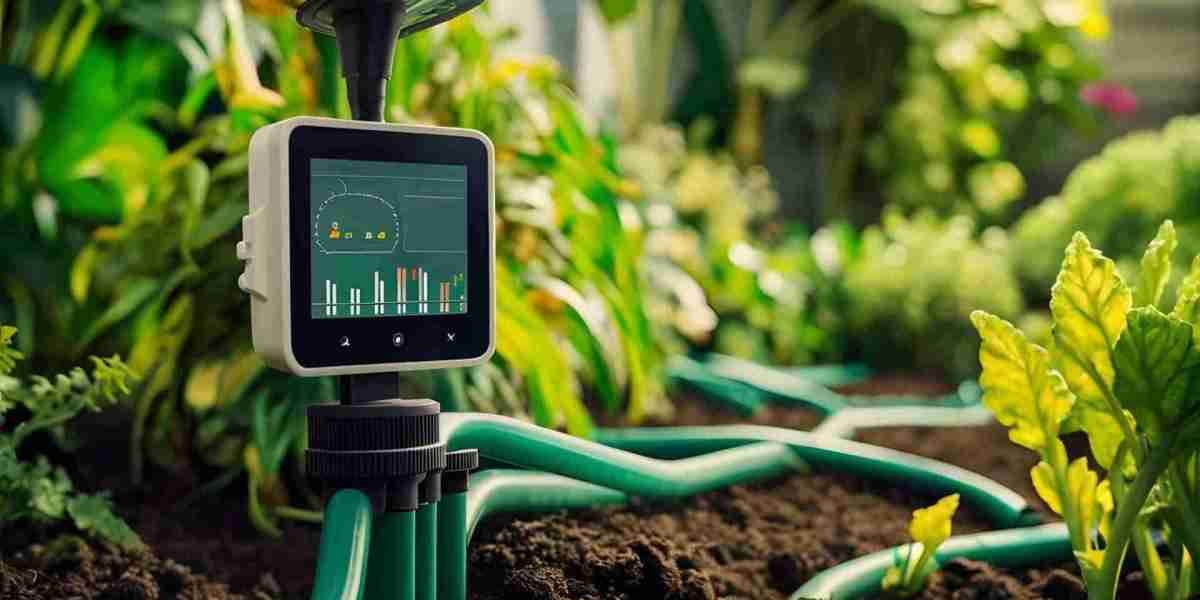As the demand for more efficient agricultural practices grows, the adoption of smart irrigation systems is gaining traction. These systems, designed to enhance water efficiency and reduce resource wastage, have the potential to transform how farms operate. Despite their promising capabilities, the smart irrigation market is encountering several significant challenges that hinder widespread implementation. Below, we explore some of these issues and how they impact the growth of this industry.
1. High Initial Investment Cost
One of the primary barriers to the adoption of smart irrigation systems is the upfront cost involved. Unlike traditional irrigation systems that may be cheaper to install, smart irrigation technologies—equipped with sensors, controllers, and monitoring tools—require significant financial outlay. For farmers, especially in developing countries, the high cost of advanced equipment can discourage adoption. Though smart irrigation promises savings in water and energy over time, the initial investment may seem prohibitive for small-scale farmers who are operating on tight budgets.
2. Lack of Awareness and Education
Many farmers, particularly in rural regions, are still unaware of the advantages and functionalities of smart irrigation systems. Some are resistant to change, preferring the familiar and time-tested methods of irrigation. This lack of awareness coupled with insufficient education on the operation and maintenance of advanced systems acts as a significant obstacle to adoption. Without proper training and understanding of how smart systems can revolutionize farming practices, farmers may be reluctant to implement such technologies on their land.
3. Technical Complexity and Maintenance
Smart irrigation systems, while effective, are often complex. They incorporate various sensors, weather prediction tools, soil moisture controllers, and mobile apps to enable real-time monitoring and automation. Managing and maintaining these systems can be a challenge, particularly for farmers with limited technical skills. Additionally, these systems require regular maintenance and calibration to ensure accuracy. In some cases, the complexity of these technologies may lead to failures, further discouraging farmers from integrating them into their farms.
4. Limited Internet Connectivity in Rural Areas
Many smart irrigation systems rely on cloud-based data and real-time monitoring via the internet. However, in rural and remote areas where internet connectivity is unreliable or nonexistent, the full potential of smart irrigation solutions cannot be realized. In these regions, farmers may struggle to implement these technologies effectively, especially when access to a constant internet connection is essential for timely updates, data processing, and control.
5. Compatibility with Existing Systems
Another significant challenge faced by farmers looking to integrate smart irrigation solutions is the compatibility issue with their existing infrastructure. Many farms still rely on older irrigation systems that may not easily integrate with modern, tech-driven equipment. Upgrading these systems to accommodate smart technology requires considerable investments in modifications, hardware, and software integration, which may not be feasible for all agricultural businesses.
6. Data Privacy Concerns
As smart irrigation systems generate large volumes of data, including soil moisture levels, crop health metrics, and water usage patterns, privacy concerns begin to surface. There are worries about the misuse of data, especially when it comes to personal farm data or large-scale agricultural practices. The fear of data breaches and misuse can create hesitation among farmers, who may not feel comfortable sharing their operational data with external providers or relying on third-party solutions.
7. Climate and Environmental Variability
Smart irrigation systems function based on real-time data inputs from sensors and weather forecasts. However, these inputs may sometimes fail to predict extreme weather conditions, such as sudden storms or extreme heatwaves, which could affect water usage patterns and system efficiency. The complexity of forecasting accurate, real-time environmental data presents a continuous challenge for the smart irrigation industry. Systems may struggle to adjust in cases of unpredictable climatic conditions, reducing overall system efficiency.
8. Limited Financial Support and Policy Incentives
Government support and policies play a pivotal role in encouraging the adoption of new technologies in the agriculture sector. In many countries, there is a lack of adequate funding or financial incentives that would support farmers in adopting smart irrigation systems. Limited subsidies or grants may prevent smaller-scale farmers from investing in such systems despite the long-term benefits. Without strong governmental backing and conducive policies, the widespread adoption of smart irrigation solutions is likely to remain limited.
9. Varying Market Needs and Preferences
Different geographic regions and crop types necessitate different irrigation methods, and the market for smart irrigation systems is not one-size-fits-all. Customizing systems to suit specific agricultural needs can be resource-intensive, leading to the underdevelopment or overdevelopment of certain smart irrigation products. This variance in demand across regions and crop types further complicates the market for these systems, making it challenging for manufacturers to target their solutions effectively.
Conclusion
The smart irrigation market faces a variety of hurdles that are impeding its growth, including high initial costs, lack of awareness, and technical complexities. As the market grows, stakeholders—governments, technology providers, and agricultural organizations—need to work together to provide education, address technological challenges, and develop financing solutions that lower entry barriers for farmers. A combined effort to tackle these issues will help unleash the full potential of smart irrigation, benefitting farmers and the environment alike.




